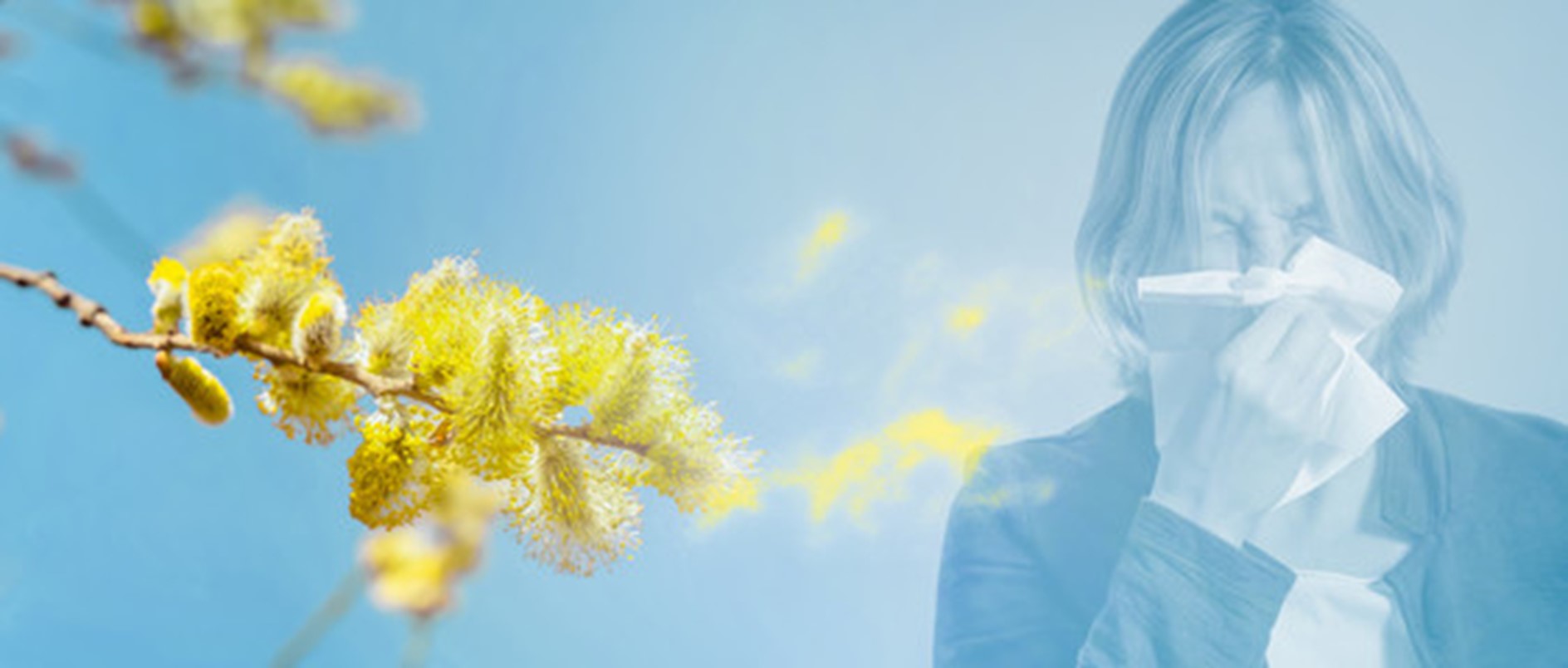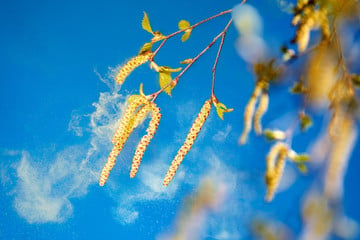Pollen allergy is the most common allergic disease in Switzerland and Europe. About 20 percent of the population suffers from annoying hay fever, as it is commonly known. Out of these, 70 percent react to grasses. The flower of a single blade of grass contains around 4 million pollens. Birch, alder, or hazel are also common triggers for pollen allergy sufferers.
Pollen season
The beginning, as well as the duration of the pollen season, is mostly driven by temperature. This year, hazel bushes and alder have already given allergy sufferers a hard time in January. However, with low temperatures, pollen count can be delayed until March and usually lasts until the fall.
Hay fever as allergy type 1
Science divides allergies into four types. Hay fever belongs to type I, the immediate type, in which the reaction arrives immediately after contact with the allergen. Symptoms may reappear after four to six hours. Besides hay fever, insect allergies and allergic asthma also belong to immediate type I. The other 3 allergy types are cytotoxic type, complex immune type, and late-type reaction.

Predisposition to hay fever
The predisposition to hay fever is hereditary. If the father and/or mother suffer from allergic reactions, the risk of children developing an allergy is about 60%. Air quality can also favor the development of allergies in children, especially diesel particles or fine dust. On the other hand, contact with dogs and/or cats can prevent the development of an allergy in the sense of tolerance development.
Triggers of hay fever
Many plant species disperse their male genetic material with pollen. The light pollen can fly over several hundred kilometers, while the heavy pollen is carried by insects. Due to their small size (about 10-20 micrometers), the flying pollen penetrates more easily into the upper respiratory tract, thus triggering pollen allergy.
Pollen allergy is a reaction to one or more types of pollen. The immune system reacts to the proteins of the pollen, which are harmless in themselves. In allergy sufferers, histamine and other substances are released as soon as they inhale pollen or come into direct contact with it. This can lead to inflammation of the conjunctiva and nasal mucosa.
The three important main groups of triggers of pollen allergy are
Trees: hazel, alder, ash, birch, hornbeam, oak
Grasses: for example timothy grass, tangle grass, English ryegrass
Herbs: mugwort, ragweed
Symptoms
Pollen allergy sufferers can suffer from the following symptoms: Runny nose, difficulty breathing through the nose, itchy and watery eyes, sneezing attacks, hoarseness, and coughing. Often the symptoms are mistaken for a cold. Itchy in the palate and throat may indicate a so-called cross-allergy, which becomes noticeable when eating certain fruits and vegetables. A pollen allergy, which remains untreated for a longer period, can develop into allergic asthma, in this case, one speaks of a so-called floor change.
Tips for allergy sufferers
For allergy sufferers, it is essential to know which pollen is flying to be able to avoid it better. Precise information on pollen counts in Switzerland can be found at www.pollenundallergie.ch or via the "Pollen News" app. The measurement data is provided by MeteoSwiss, which is measured with our real-time pollen monitoring systems. European pollen data are published in different languages at www.polleninfo.org.
References:
-
Allergiezentrum Schweiz (2023): Pollen allergy. Retrieved online on March 28, 2023 from: aha.ch
-
Allergieinformationsdienst (2023): Trigger for hay fever. Retrieved online on March 28, 2023 from: allergieinformationsdienst.de
-
Gesundheitsinformation (2023): Reason pollen allergy. Retrieved online on March 28, 2023 from: gesundheitsinformation.de
-
European Climate and Health Observatory: Health issues: Retrieved online on March 28, 2023 from: https://climate-adapt.eea.europa.eu
-
Allergie Ratgeber: Hay fever. Retrieved online on March 28, 2023 from: https://www.allergieratgeber.de
-
Pollenstiftung: Reason for hay fever: Retrieved online on March 28, 2023 from: https://www.pollenstiftung.de
Debora Thaler
Marketing Coordinator

